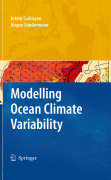
The book provides a comprehensive review of the historical development and the present status of ocean circulation models. The analysis extends from simpleanalytical approaches to the latest high-resolving numerical models with dataassimilation. The authors - pioneer scientists in ocean and shelf sea modelling - examine the evolution of Western and Eastern modelling conceptions duringthe second half of the last century. They present the current state of the art in ocean climate modelling and offer examples for several oceans and shelf seas. The book contains a critical analysis of literature on ocean climate variability modelling, and of the strengths and weaknesses of major approaches. Itexplores the future developments in the field, with a focus on models based on the synthesis of numerical simulation and field observation, and on nonlinear thermodynamical model data synthesis. Compilation of theory with emphasis onthermodynamic forcing Review of the history of modelling conceptions Discussion of adjustment strategy for model initialization Presentation of new regional applications Examination of modern methods in numerical modelling of ocean variability INDICE: Preface.- Mathematical Background and Methods of Ocean Modelling.-Simple Linear Models for Diagnostic Calculation of Ocean Climate Characteristics.- Nonlinear Models for Diagnostic, Prognostic and Adjustment Calculations of Ocean Climate Characteristics.- Synthesis of Models and Observed Data.- Modelling of Climate Variability in Selected Ocean Basins.- Modelling of Climate Variability of Selected Shelf Seas.
- ISBN: 978-1-4020-9207-7
- Editorial: Springer
- Encuadernacion: Cartoné
- Páginas: 370
- Fecha Publicación: 01/10/2008
- Nº Volúmenes: 1
- Idioma: Inglés
- Inicio /
- /
